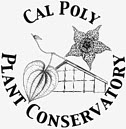By their fruits ye shall know them (II)
More small tips on Eucalyptus Identification
Gustavo Iglesias Trabado 
GIT Forestry Consulting - Consultoría y Servicios de Ingeniería Agroforestal - www.git-forestry.com
EUCALYPTOLOGICS
GIT Forestry Consulting - Consultoría y Servicios de Ingeniería Agroforestal - www.git-forestry.com
We have seen a previous example in EUCALYPTOLOGICS of bark features being sometimes misleading for accurate Eucalyptus species identification. In that case, different bark types were present for the same Eucalyptus species. Today we see another example, but reversed. In this case, similar bark types belonging to different Eucalyptus species (Enlarge Fig. 1).

Fig. 1: Example of "bark only" diagnosis misleading Eucalyptus species identification (Click image to enlarge)
Observation and patience might easily be the two main ideas when trying to work out which of the Australian trees is standing in front of you. And observing an Eucalyptus for species identification is a process that takes several sequential steps. But undoubtly, those organs yielding the most information tend to be their flowers and their seed bearing capsules.
 Fig. 2: Urceolate and globose infrutescences of Corymbia maculata (Spotted Gum, ex Eucalyptus maculata). Compare to Eucalyptus pauciflora (Fig. 1, right).
Fig. 2: Urceolate and globose infrutescences of Corymbia maculata (Spotted Gum, ex Eucalyptus maculata). Compare to Eucalyptus pauciflora (Fig. 1, right).However, the same way bark is not always enough, flowers and capsules alone can be insufficent in some cases for a foulproof botanical diagnosis, especially due to they sharing with bark both seasonal and yearly variability. The ideal sampling includes the different stages of reproductive organ maturation, from flower buds to senescent capsules, and also foliage.
 Fig. 3: Example of botanical sample gathering methodology for accurate Eucalyptus species identification (Click to enlarge)
Fig. 3: Example of botanical sample gathering methodology for accurate Eucalyptus species identification (Click to enlarge)Full sampling is not always required for Eucalyptus species identification albeit the more pieces of the puzzle being observed, the more accurate botanical diagnosis is. And easier! There are several hundred different Eucalyptus taxa, species, subspecies, varieties, and hybrids to get confused with. But lacking everything else, by their fruits (and not bark) you shall know them!
Interesting links

Anthesis in Eucalyptus robusta (Swamp Mahogany) flowers.
Photography by Brian Johnston (Click image to enlarge)
 Maturation stages for eucalypt fruits collected on Corymbia calophylla (Marri) trees in a single visit, showing some of the internal organs within Eucalyptus infrutescences in each phase. (Click to enlarge)
Maturation stages for eucalypt fruits collected on Corymbia calophylla (Marri) trees in a single visit, showing some of the internal organs within Eucalyptus infrutescences in each phase. (Click to enlarge) Different simultaneous stages of the reproductive cycle and eucalypt seed maturation process in a standing Snow Gum Eucalyptus tree.(Click to enlarge)
Different simultaneous stages of the reproductive cycle and eucalypt seed maturation process in a standing Snow Gum Eucalyptus tree.(Click to enlarge) After Eucalyptus seed collection: examples of Eucalyptus seedling nursery stock for afforestation
After Eucalyptus seed collection: examples of Eucalyptus seedling nursery stock for afforestationFind a local expert to ID your Eucalyptus
If you have an unknown eucalypt around and you are able to collect and photograph samples of the key organs needed for identification, do not hesitate contacting GIT Forestry Consulting.

If you are in the USA and find it easier to post fresh samples to a local expert, you can also contact Dr. Matt Ritter, resident eucalypt hunter at the California Polytechnic State University.
 Visit Cal Poly Plant Conservatory
Visit Cal Poly Plant Conservatory
 Subscribe to receive EUCALYPTOLOGICS via e-mail
Subscribe to receive EUCALYPTOLOGICS via e-mail
 Visit Cal Poly Plant Conservatory
Visit Cal Poly Plant Conservatory Subscribe to receive EUCALYPTOLOGICS via RSS
© 2008 Gustavo Iglesias Trabado. Please contact us if you want to use all or part of this text and photography elsewhere. We like to share, but we do not like rudeness.


No comments:
Post a Comment